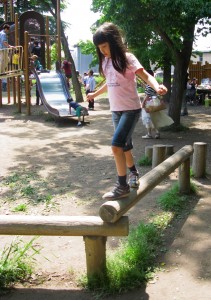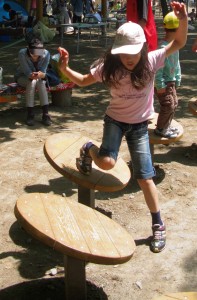Oddly enough, I have some enemies, of sorts, here in Japan. I am apparently hated by three or four people I’ve never shared more than a few words with. Usually, such hate occurs soon after I’ve begun speaking and people suddenly invent friends, even in empty rooms, or feign death. But not in these cases. (Well, maybe in one case.)
My first enemy is a man I’ve seen four times since we moved to Kawagoe. He’s clean and well fed but always seems to be just short of cash in the train station and wonders if people could help–a common con around the world, by the way. The first time I met him, he grabbed me and started a story of woe and pain and I told him to go away. Two years later, in the same station, he grabbed me from behind again and asked for money. I chased him away again. Two years after that (yes, I really do see him every two years) he grabbed me and as soon as I turned around he recognized me and ran away. Then, just this year, we ran into him in a different station, this time inside the gate. I chased him away from a group of foreigners and told them how he and I were good friends, sort of. (She Who Must Be Obeyed saw him this time, which actually makes me feel as if he may actually exist in the world and not just in my head.)
The second guy is an asshole I’ve run into twice on the train. He’s rail thin, about my age and always wears aviator sunglasses a couple sizes too large for his head. If I sit near him he starts this angry, anti-foreigner whisper that I pretty much have learned to ignore. I haven’t seen him for a few years.
The most interesting case is a man I see almost every work day. He’s heading away from the station about the time I’m heading toward it. Everyone’s suffered that awkward moment where you see someone approaching and you know that eventually you will have to acknowledge their existence, usually with a grunted “w’sup?” or “howzigon?” and a nod. I nodded at him, especially when it became clear we would meet regularly. He apparently got tired of seeing my face, though, and started crossing the street to get away from me as we drew close. (In his defense, I do not know how bad I smell, so he may have good reason to flee.) He’s so desperate to get away that a couple of times he’s nearly been hit by approaching cars as he stepped into the street.
The funny part about this one is I used to pass a woman on the same road who started doing the same thing. She also almost got hit by cars a couple times.
I, of course, helped the situation by laughing at them and shaking my head.




